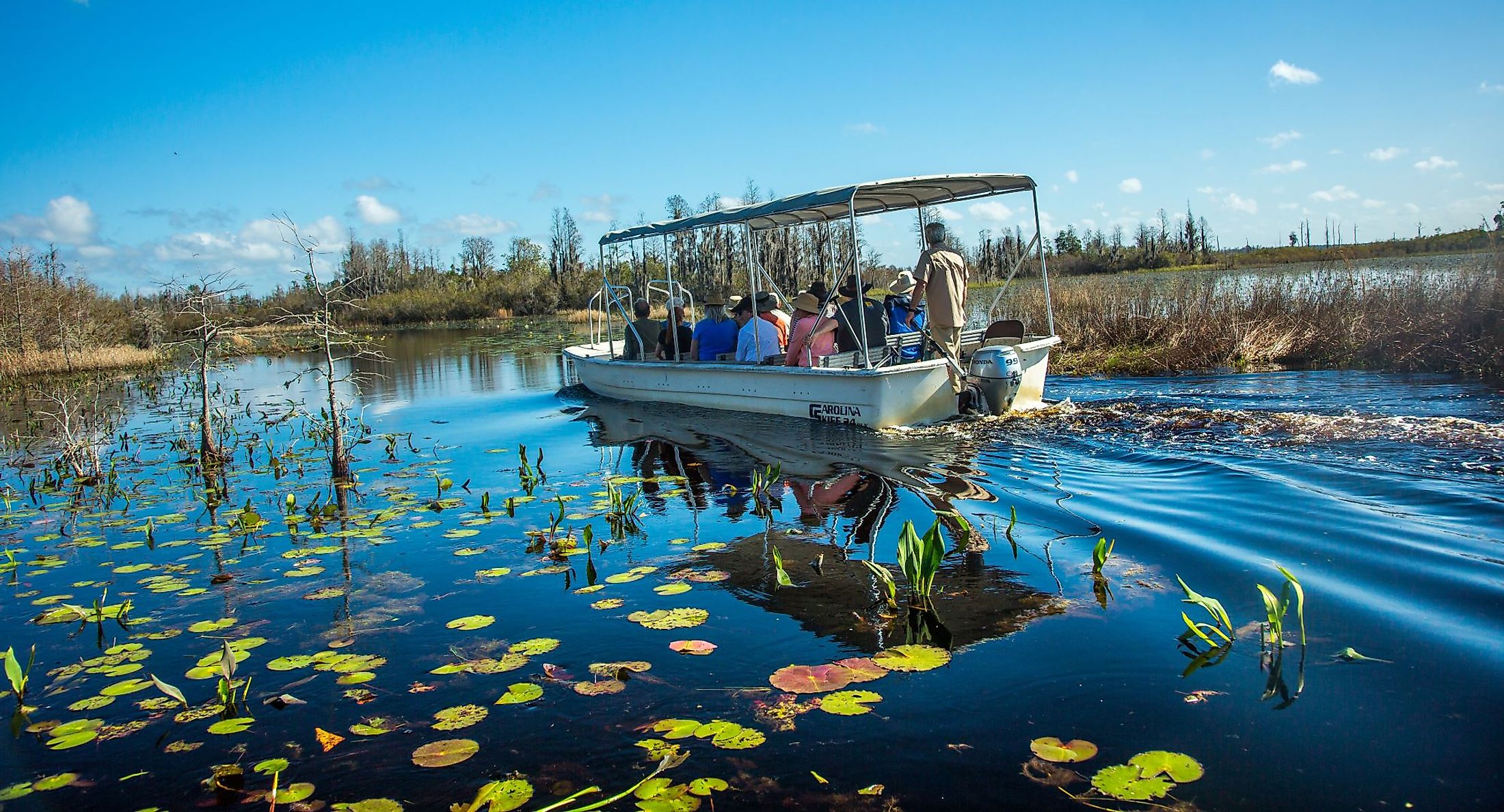
Okefenokee Swamp
Spanning across Southern Georgia and Northern Florida is the Okefenokee Swamp. With an area of 1,770 sq. km, the swamp is one of the largest in North America. Since 1937, the Okefenokee National Wildlife Refuge has protected the diverse landscape. Organizations such as Okefenokee Swamp Park and Okefenokee Adventures welcome visitors to enter the grounds and experience the natural beauty of this ancient environment. Explorers may encounter many mammals, birds, reptiles, amphibians, and unique vegetation while navigating through the twisting waterways.
Geography And Climate Of Okefenokee Swamp
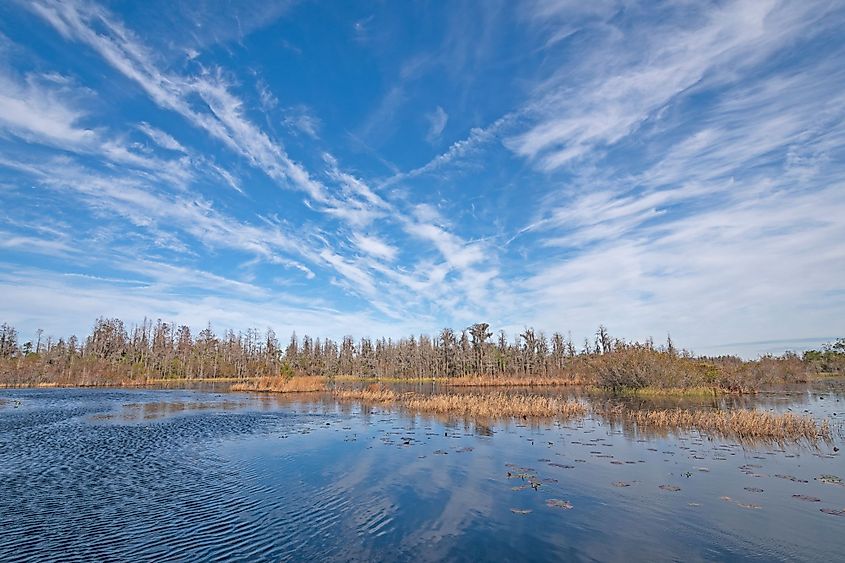
The immense Okefenokee Swamp covers a vast area in Southern Georgia and overlaps with Northern Florida. Thirty-one meters above sea level is the lowest section of the wetlands, with 39 meters standing being the tallest. Eighty kilometers east, the Atlantic Ocean crashes into the coast. St. Mary’s River allows the swamp to drain into the Atlantic Ocean. Waycross is the closest city to the park, 20 minutes north of the gates. Crossing the border south into Florida is John M. Bethea Park, which neighbors the Okefenokee National Wildlife Refuge. Another drainage source is the Suwanee River, the 396-kilometre-long waterway that begins in the swamp, crosses over northwestern Florida, and empties into the Gulf of Mexico.
The area surrounding the Okefenokee Swamp has a predominant semi-tropical climate. Winters tend to be drier than the summer months. January is the coldest month, with lows reaching 5˚C with only a week of precipitation. In comparison, June is the wettest month, with an average of 165 mm of rainfall. The warmest month is July, and temperatures can reach as high as 34˚C and low as 22˚C. The humid weather in the area leaves behind the scorching summers, and the calm autumn weather arrives. Rainfall is lighter, with November being the driest month of the year, with only an average of 62 mm of rain.
History Of Okefenokee Swamp
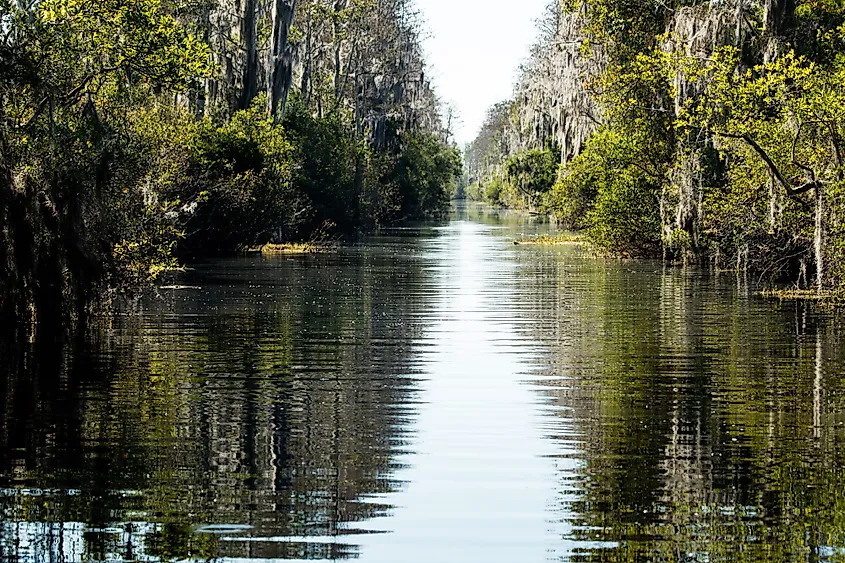
Over 65 million years ago, the entire area was under the ocean. Deposits left behind from the receding sea created the geological landforms that are visible today. The Seminoles, a multi-tribe clan, named the swamp “Land of the Trembling Earth” 10,000 years ago. The name described the floating islands located within the marsh. Records dating back to 1602 and 1768 state that the Spanish inhabited two villages in Okefenokee and classified it as Lake Oconee. The 2nd Seminole War moved into the Okefenokee region in the mid-1830s and drove the Seminole tribe out of the area. In 1891, Governor John Gordon sold the land to the Suwanee Canal Company, and they attempted to empty the waters to log the cypress lumber. Extensive logging in the swamp went on until the early 1940s. The US government purchased 293,000 acres in 1937 to help preserve the ecosystems. Over four years, the Civilian Conservation Corps settled in the park and established facilities surrounding the protected land. By 1958, no locals lived inside the refuge as all industries had to shut down. At present, the protected area covers 396,000 acres.
Ecology Of Okefenokee Swamp
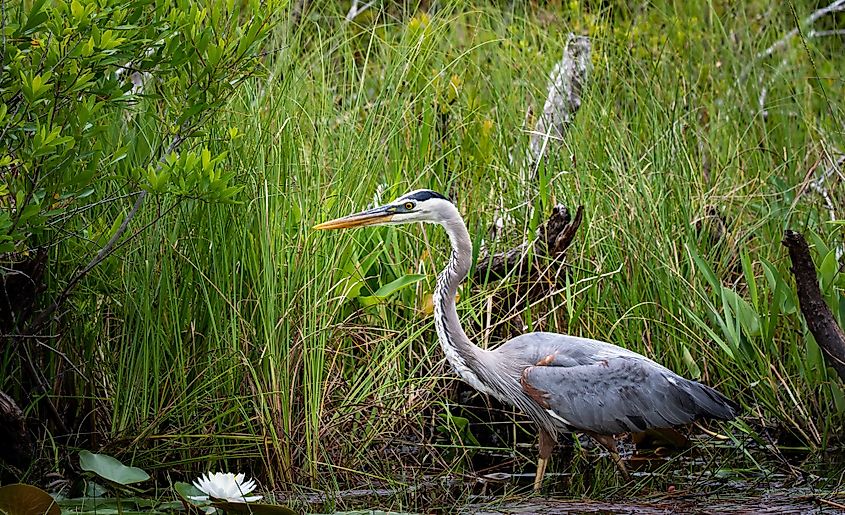
Okefenokee’s rich soil composition and acidic waters aid in the growth of different species of plants. The floating islands make up 70 landmasses where other trees, flowers, and shrubs co-exist. Large pitcher plants, sundews, and butterworts call Okefenokee home. These are different types of carnivorous plants that can capture and digest insects. Any waterfowl or wading birds indigenous to the southern states are native to the swamp. It is common to spot storks and herons throughout the year. Many migratory birds enter the region in search of a warmer climate. At the same time, seasonal birds come and go throughout the year.
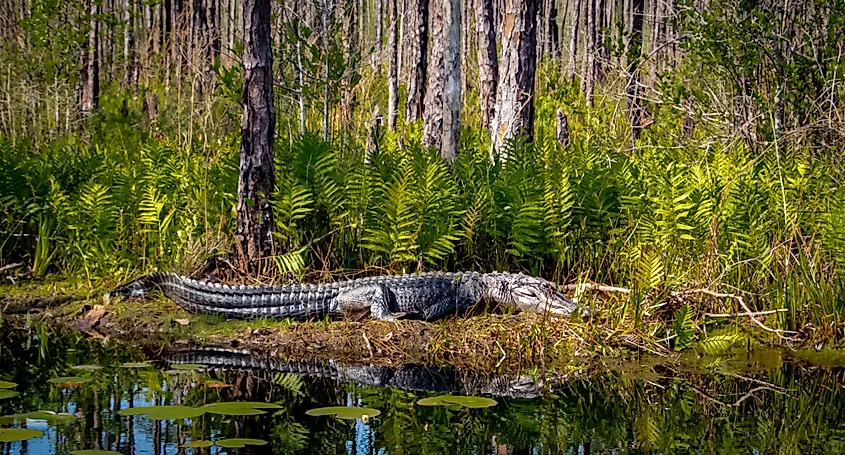
Over 30 species of land and aquatic mammals are native to the wetlands. Bears, deer, bobcats, foxes, possums, otters, beavers, and minks roam the luscious part of Georgia. The largest predator in the refuge is the American alligator, followed by a handful of venomous snakes. Other reptiles are harmless snakes, blue-tailed skinks, and green anoles. It also includes snapping, mud, and softshell turtles that feed on aquatic plants and hide in the depths of the waterways. The refuge creates perfect egg-laying conditions for frogs and toads; there are over 20 native species of amphibians in the Okefenokee Swamp.











